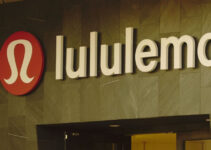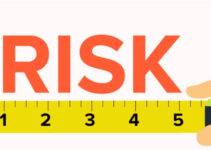Colorful brick toys have been highly popular among kids for the past many decades. But the company’s growth and popularity declined significantly in the early 2000s due to poor decision-making and not adopting the technological changes. Lego has gone through various changes in its organizational structure, manufacturing process, and business model. Today, we’ll discuss the Lego change management case study; its historical background, internal and external factors, implemented changes, and the impact of the change program.
Some of the main products and services of Lego are as follows;
- Films and TV
- Board Games
- Video Games
- Clothing
- Books and Magazines
Historical Background of Lego
- 1932 – Ole Kirk Christiansen laid the foundation of the Danish Company Lego; the term “Lego” is from the Danish word “Leg godt” and it means to perform well
- 1949 – Shifted its business from wooden toys to plastics connecting bricks
- 1958 – Lego introduced the modern form bricks in 1958 through years of experimentation on the brick’s structure and design; they instantly attracted the attention of the mass audience
- 1960s – The company expanded its product portfolio by adding a variety of Space Set, Play Theme, and Building Sets
- 1970s – Lego introduced its first licensed products
- 1980s – Toys brand started launching Movies and TV shows for kids
- 1990s – Lego was expanding rapidly and facing a lot of competition, and the company’s financial health was also declining
- 2000s – Toys brand started regaining its popularity and publicity by introducing famous characters and franchises like Lego Harry Potter, Lego Star Wars, and others
- 2022 – Lego has a network of 155 brand stores in 111 countries across the world
Factors Impacting Change Management
Some of the key internal and external factors in the Lego change management case study are as follows;
Internal Factors
I-Leadership Issues
Lego faced leadership and kept on changing leaders in a very short time. They lacked the capability of giving strategic direction to the company and cause the disconnection between the company’s goals and actions.
II-Complicated Product Lines
The product lines of Lego became highly complex, and it was highly difficult for the company’s management to conduct sales effectively, production processes, and inventory.
III-Inefficient Production Process
The production and manufacturing processes of Lego were obsolete and inefficient. They were causing low-quality products, higher costs, and longer lead times.
IV-Limited Collaboration
The organizational structure of Lego was rigid and strict, and there were almost no coordination and collaboration among various departments and units. It resulted in the form of no innovation, duplicated efforts, and inefficient processes.
V-Poor Financial Performance
The financial growth of Lego decreased to a great extent in the late 90s and early 2000s. It happened because the company was over-expanding, failing to realize the changing customer preferences, and not producing innovative products.
External Factors
I-Social Trends & Attitude
Overall social attitudes and societal trends badly affected the sale of toys. For instance, customers want eco-friendly, environmentally sustainable products, and they were saying no to plastic-based products. The toy brand started employing plant-based materials for the production of sustainable bricks.
II-Tech Development
Technological development greatly affected the toy industry and the toy market. for instance, the popularity of digital entertainment and video games decreased toy sales in some markets. It pushed the company to launch Lego digital games and digital bricks games.
III-Demographic Change
Demographic change means shifting interests in the toys market, and now children want other types of toys that are charming and interesting. In order to deal with the changing demographic trends, Lego made adjustments in its product line relevant to the demands of the target demographic.
IV-Competition
Many substitute competitors entered the toys market and they were offering the same toys at a lower price. In order to gain a competitive edge, Lego launched differentiated and innovative products relevant to the interests of customers.
V-Economic Conditions
The economic recession impacted the sale of toys due to the limited purchasing power of people. They consider toys luxury and non-essential items, and their focus is buying only necessary items.
VI-Toy Industry Changes
The toys market is also going through the transformational phase just like any other business industry. In order to stay relevant in the market, Lego needs to adjust its business model relevant to the changing market trends.
Lego Implemented Top Change
Some of the main changes the company faced in the Lego change management case study are as follows;
Expanding Brand
Lego amplified its brand portfolio and included the following items;
- Theme park
- Movies
- Video games
The brand portfolio expansion allowed the company to diversify its revenue and income stream and target new types of customers. The toy brand is changing its reliance on the success of its main toy products.
Customer Focused
Lego followed a customer-focused strategy comprised of listening to the feedback of customers. The company employed key insight into marketing decisions and product development. Resultantly, Lego manufactured products relevant to the demands of customers, and it amplified the company’s sales and profitability.
Collaborative Structure
Lego launched a collaborative and coordinated organizational structure and culture. It encouraged and boosted the morale of employees to share information and collaborate in a team. However, it resulted in the form of efficient decision-making, innovative products, and streamlining with the company’s strategic objectives.
Quick Production Process
Lego implemented the agile production process; it allows the company to achieve greater flexibility relevant to the changing market trends and demands.
- Improved the quality of products
- Lower production cost
- Limited lead time
Simplified Product Line
Lego simplified its product line by streamlining various processes and decreasing offered set and number of themes. It helps the company in the following ways;
- Efficiently manage the inventory
- Improve production processes
- Focus on core business areas
Impact of Lego Change Management Program
The impact and result of the change program in the Lego change management case study are as follows;
Diversified Product Line
Lego diversified and expanded its business and product portfolio and generated more sources of income. It resulted in the form of;
- Sustainability for the company
- Greater scalability
- Limited reliance on the few core products
Brand Identity
Lego successfully implemented the change program and achieved the market leadership position, and the company earned a reputation for;
- Sustainable brand
- Producing innovative designs
- High-quality products
High Market Share
Successful implementation of the change program, marketing strategy, and product development helped the company to increase company’s market share.
Profitability & Revenue
Lego’s revenue and profitability increased significantly over the past two decades. It was 1.4 billion dollars in 2004 and increased to 6.5 billion dollars by the end of 2020. It happened because of the company’s strong commitment to change management programs.
Conclusion: Lego Change Management Case Study
After an in-depth study of the Lego change management case study; we have realized that Lego is one of those companies that have successfully implemented the change program. If you are learning about Lego’s change management program, then you should keep in mind the abovementioned factors and strategies.
Ahsan is an accomplished researcher and has a deep insight in worldly life affairs. He goes Live 3 days a week on various social media platforms. Other than research writing, he’s a very interesting person.


